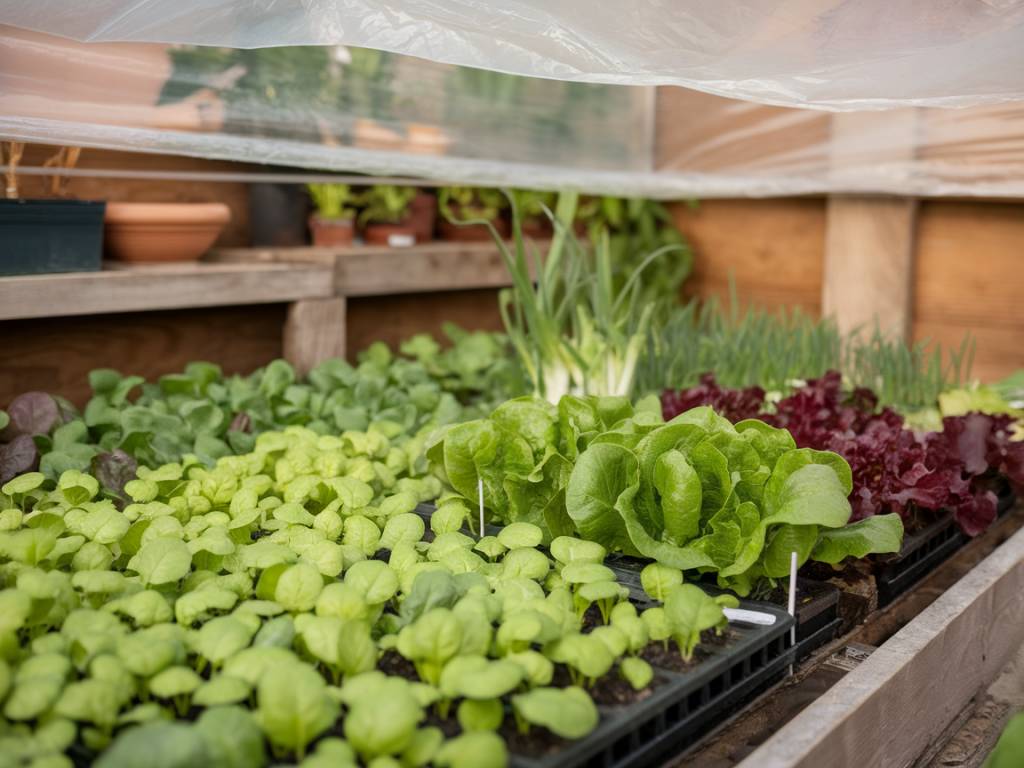As a gardener deeply dedicated to natural practices and permaculture, I’ve discovered some incredible methods to extend my growing season and provide my plants with the best possible start. One such method is building a hotbed for early spring seedlings. The concept of a hotbed may seem old-fashioned, but it’s surprisingly effective, especially when you want to get a head start on the growing season in the chilly UK climate.
What is a Hotbed?
A hotbed is essentially a raised bed that’s heated naturally using the fermentation process of organic materials. Think of it as Mother Nature’s incubator. By utilizing decomposing manure and other organic materials, a hotbed creates a warm environment ideal for germinating seeds and nurturing young plants when outdoor temperatures are still too low. It’s a fantastic, eco-friendly way to harness natural processes to benefit your garden.
Materials Needed
Before you begin constructing your hotbed, gather the following materials:
- Fresh horse manure (ideal for its high nitrogen content and rapid decomposition)
- Straw or leaves
- Good quality garden soil or compost
- Wooden planks or sturdy boards (for building the bed frame)
- A tarp or old windows (for covering the hotbed)
- Thermometer (to monitor temperature)
Choosing the Right Location
Selecting the ideal location for your hotbed is crucial for its success. You want a spot that gets plenty of sunlight – ideally a southerly facing position, with some protection from the wind. The goal is to maximize the sun’s warmth during the day while maintaining a stable temperature at night.
Constructing the Hotbed Frame
The first step is to build the frame of your hotbed. You can use wooden planks or any sturdy boards you have on hand. The size of your hotbed can vary depending on your needs, but a common dimension is about 120cm (4ft) wide and 240cm (8ft) long. The height of the frame should be between 30-45cm (12-18 inches).
Assemble the frame by securing the planks together at the corners. Ensure the structure is sturdy and stable. If you plan to make a deeper hotbed for taller plants, you can build the sides higher, but keep in mind this will require more organic materials to fill.
Layering the Organic Materials
Once your frame is built, it’s time to fill it with organic materials. This is where the magic happens:
- Start with a thick layer (about 30cm/12 inches) of fresh horse manure mixed with straw or leaves. This decomposing layer will generate heat. If you can’t find horse manure, cow manure or even a mix of other high-nitrogen organic materials can work, although horse manure is preferred because of its rapid decomposition.
- On top of the manure, add a 15-20cm (6-8 inches) layer of good quality garden soil or compost. This is where your plants will grow, so make sure it’s nutrient-rich and well-draining.
Pat down the layers slightly, but don’t compact them too much – you want airflow to aid in the decomposition process.
Monitoring the Temperature
Once your hotbed is constructed and filled, cover it with a tarp or old windows. These coverings will help retain heat and protect the bed from excessive rain or cold winds. It’s important to monitor the temperature inside your hotbed regularly. A thermometer inserted into the soil can help with this. The temperature will rise significantly as the manure decomposes, ideally reaching around 55-65°C (130-150°F).
Allow the hotbed to « cook » for a week or two before planting. This period lets the temperature stabilize and ensures your bed isn’t too hot for the seedlings. Ideally, the temperature should drop to around 25-30°C (77-86°F) before you start sowing seeds.
Planting Your Seedlings
When the hotbed’s temperature has stabilized, it’s time to sow your seeds. Some excellent choices for early spring seedlings in the UK include:
- Leafy greens like lettuce, spinach, and kale
- Root vegetables such as radishes, beets, and carrots
- Herbs like cilantro, parsley, and chives
Sow your seeds according to the instructions on the seed packets, keeping in mind their required spacing and depth. Water gently but thoroughly, ensuring the soil remains moist but not waterlogged.
Tending to the Hotbed
Maintaining a hotbed requires regular attention:
- Check the temperature daily to ensure it remains within the ideal range. If the temperature drops, you may need to add more fresh manure around the edges of the bed.
- Water your seedlings as needed, paying careful attention to the moisture level of the soil.
- Ventilate the hotbed on exceptionally warm days to prevent overheating, by lifting the tarp or propping open the windows slightly.
Transplanting and Subsequent Plantings
As your seedlings grow and the outdoor temperatures rise, you can gradually harden off your young plants by exposing them to the outside elements bit by bit. Once the risk of frost has passed, typically around mid-spring, transplant the seedlings to their permanent positions in your garden. Your hotbed can then be reused for a successive crop, or you can continue to grow in it throughout the growing season.
Building a hotbed is a labor of love that pays off exponentially by giving you a head start on the growing season and providing a nurturing environment for your plants. By harnessing the natural heat from decomposing organic materials, you can create a productive, eco-friendly growing space that embodies the principles of permaculture and sustainable gardening.
Happy gardening, and may your plants thrive!
Samanta
